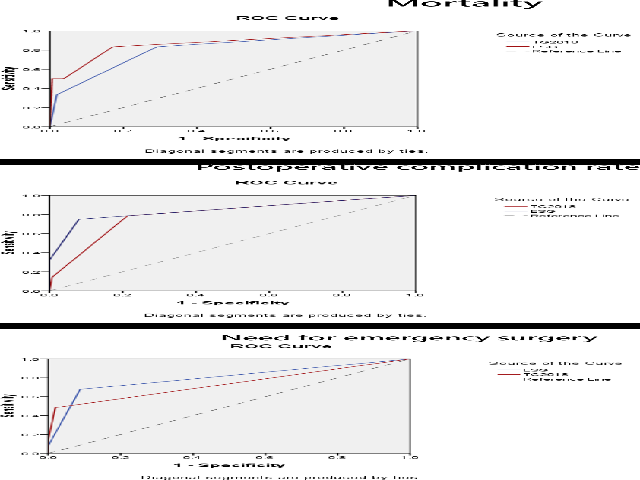Comparison between Two Severity Classifications in Patients with Acute Cholecystitis
Abstract
Background and Aim: Assessment severity helps clinicians to guide appropriate treatment and minimumize adverse outcome. The objective of our study was to comparison between TG13 severity system and EGS grade system for predicting clinical outcomes in acute cholecystitis. Methods: This is a retrospective single-center study which enrolled patients who were admitted to Pyongsong Medical University Hospital between February 2020 and October 2021. Tokyo 2013 (TG 13) severity classification and Emergency General Surgery (EGS) severity systems were validated. Clinical outcomes were mortality, postoperative complication, need for emergency surgery and hospital stay. Predictive accuracies were evaluated using Area Under the ROC Curve (AUC). Results: A total of 164 patients were included in the analysis (mean age of 57.4 years; 52.4% males). On the basis of EGS grade, 132 patients (80.5%), 22 patients (13.5%), 2 patients (1.2%), 4 patients (2.4%) and 4 patients (2.4%) were determined to have I, II, III, IV and V. Using TG13 grade, 113 patients (68.9%) were categorized as mild, 46 patients (28.0%) as moderate, and 5 patients (3.1%) as severe. In general, higher grades of severity were signifi cantly associated with worse clinical outcomes for all classification systems and this was more precise in TG 13 severity system. EGS severity classification was more superior to TG 13 grade system for predicting mortality (AUC 0.866 vs. 0.812, P <0.001), post-operative complication (AUC 0.848 vs. 0.799, P < 0.001) and need for surgery (AUC 0.798 vs. 0.734, P < 0.001). Conclusion: EGS severity classification was more superior to TG 13 grade system for predicting clinical outcomes.






